Hello again Steem friends! I have been itching to write another entry for my tropical ecosystems introduction series before the year ends. It has been quite a while, but here it is!^^ Early this year the National Geographic ran the Global Wetlands Photo Youth Contest, and a fellow Filipino, Gabriel B. Mejia, won the said contest (see photo below)! Wetlands are important ecosystems and has one of the highest net annual productivity. I have written before that wetlands are related to grasslands, so this entry would be relatively short as compared to my other write-ups.
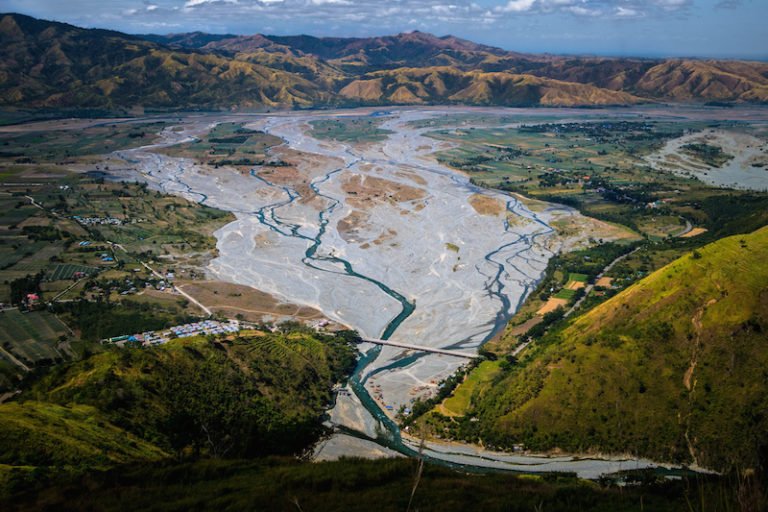
Photo by Gabriel B. Mejia (©National Geographic)
The Ramsar convention has the following definition for wetlands: “areas of marsh, fen, peatland or water, whether natural or artificial, permanent or temporary, with water that is static or flowing, fresh, brackish or salt, including areas of marine water the depth of which at low tide does not exceed six meters”. The said convention was held in Iran in 1971, and the said definition is quite broad. But considering the wetlands’ location, it would seem justified. However, for the purpose of narrowing the definition, the wetlands considered in this write up, as defined by Osborne (2012), would solely focus on areas that “are permanently or seasonally flooded by freshwater, comprising a mosaic of vegetation with areas of open, shallow water”. Wetlands are ecosystems with markedly rich soil ideal for growth and reproduction of many species. Due to its location, most wetlands became the ideal site for agricultural production, which gave rise to human civilization. Being deposited with nutrient-rich sediments, the vegetation which flourishes in wetlands filter out most sediments and other materials from both the terrestrial and aquatic ecosystems they overlap.
Light matters
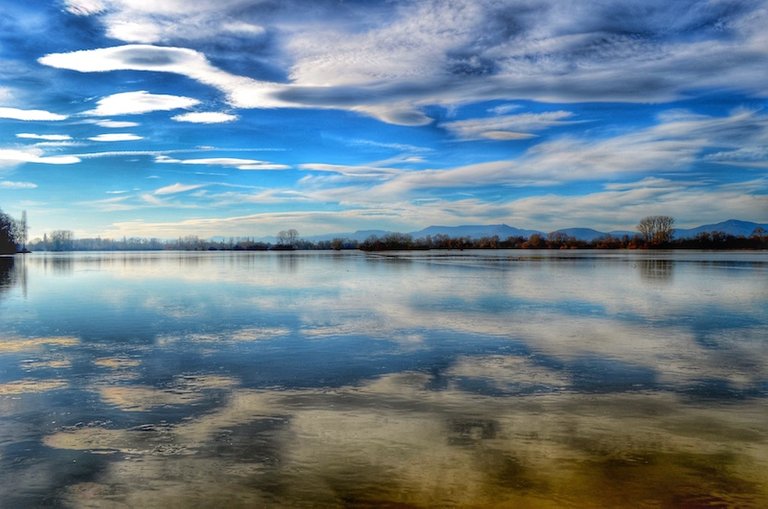
Photo by Elena Landmann (©National Geographic)
The main abiotic factors for wetland ecosystems include light, water chemistry, soil composition and temperature. Though a wetland ecosystem could either become a terrestrial or aquatic ecosystem depending on the season, it would be best to consider it as an aquatic ecosystem since its food web is largely aquatic. Light availability plays an integral role in photosynthesis and primary production in wetlands, more photosynthesis is likely to occur in terrestrial plants since the murky water of wetlands would play against submerged plants. Water chemistry, specifically dissolved oxygen (DO), pH level, alkalinity and nutrient availability all have major influence in the organisms living in the wetlands, especially in the aquatic parts where decomposition happens. Soil composition is important in supporting the vegetation and determine what kind of vegetation could be supported. While temperature, for the most part, influences both the decomposition rate of organic matter in the aquatic side, and production in the terrestrial side of wetland ecosystems (Osborne, 2012; Miller, Jr., 2005).
Decomposers’ haven
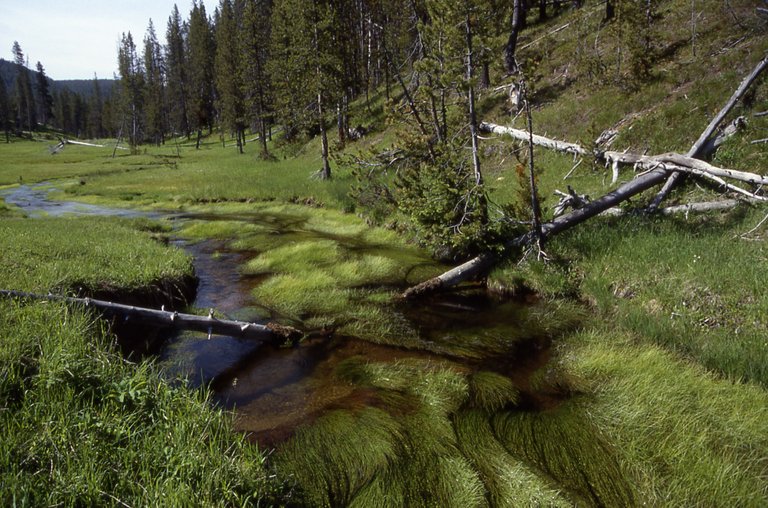
Image source: https://lessonplansscience.wordpress.com/2013/02/25/ecosystem-producers-consumers-and-decomposers-food-web/
Bacteria in wetlands are primarily responsible for the decomposition of organic matter and driving the nutrient cycle. Though species composition for wetlands tend to reflect the environmental conditions of wetlands between which type of ecosystem is favored (whether terrestrial or aquatic), most primary producers for wetlands and riparian zones are located in the terrestrial side; all plants present in the terrestrial side though are relatively water-loving plants, or plants which have high tolerance for high soil moisture content. Invertebrates are usually primary and secondary consumers which may consist of micro-invertebrates (e.g. zooplankton), but is largely composed of macro-invertebrates (e.g. arthropods) which forages in the murky waters, and terrestrial arthropods in plant structures above the water. They serve as food source for the bigger invertebrates and vertebrates alike. Vertebrates may include fishes when flooding occurs or other terrestrial vertebrates like rodents that may forage for grains and other food when the water level is low (Osborne, 2012; Miller, Jr., 2005).
Community establishments
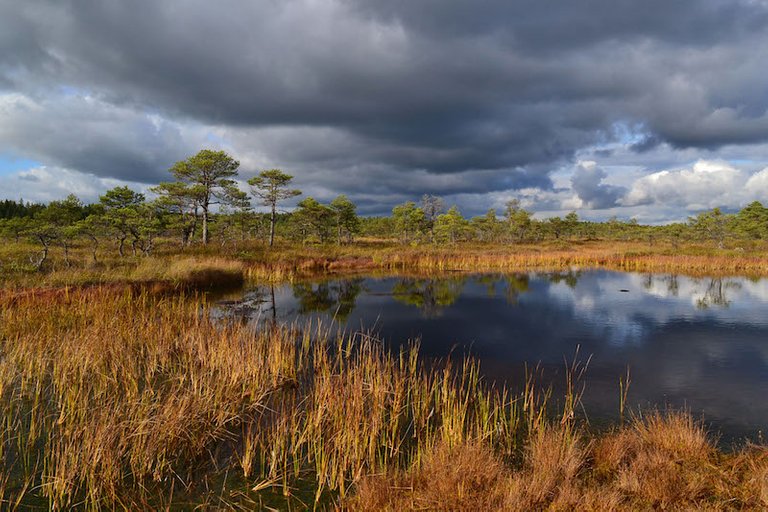
Photo by Diana Elisa (©National Geographic)
Most species that live and propagate in wetlands are generalists and r-selected species. Given the seasonality of wetlands, communities can change on a seasonal basis. But the most successful are rooted plants that can tolerate parts of them being submerged in the water or in soils with high moisture content such as tall grasses and sedges, other herbaceous plants such as Typha domingensis and Phragmites karka, and floating plants which clutch together to form floating meadows such as the Papyrus spp. and Vossia spp. Most heterotrophs could establish once autotroph establishment becomes successful, and would likely be composed of aquatic shredders and decomposers as well as arthropods living in their host plants (Osborne, 2012; Miller, Jr., 2005).
Flooding is life
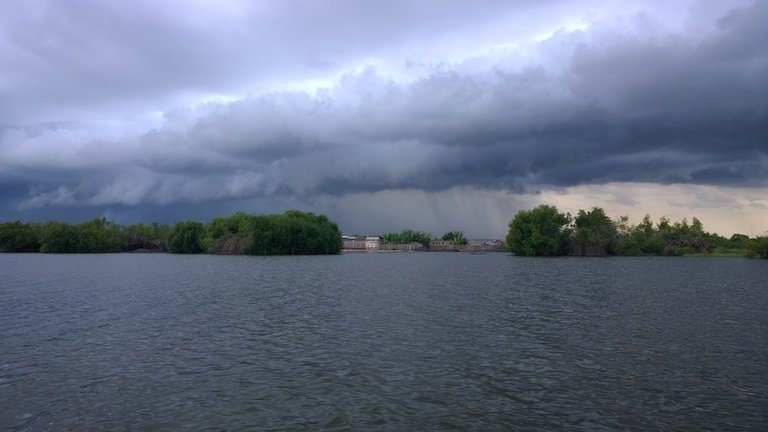
Photo by Benjamin Bureau (©National Geographic)
Due to its relatively turbid waters and vegetative cover, aquatic primary production in wetlands are very limited. Primary production is primarily done by grasses and sedges in the terrestrial side, and by floating plants in the aquatic side. Most of these plants follow the C4 photosynthetic pathway, which dominate the lowland areas with seasonal precipitation cycles. Overall, only a little amount of plant materials are consumed by heterotrophs given the relative size of the heterotrophs that are likely to succeed, as mentioned above. Meanwhile, most organic matter are usually deposited in the aquatic ecosystems and are broken down by decomposers. But with such high organic matter deposition, decomposition rate may not be enough (Osborne, 2012).
As such, organic materials are mostly deposited in water logged terrestrial depressions or above ground deposition chambers and would eventually form peat deposits. Peat deposits can be classified as topogenous, which are formed in terrestrial depressions and can be accessed by plant growing directly above it, or it can be ombrogenous which are formed above ground and could be accessed by plants through rain or by the plants which have direct access to it. Topogenous peats is generally less acidic (pH level of 5.0) and more nutrient-rich than ombrogenous peats, which can have a pH level generally ranging at 2.9-3.6. Ombrogenous peats could have enough concentrations of toxic sulphides and sodium to inhibit decomposition (Anderson, 1964; Osborne, 2012).
Prevailing anthropogenic issues

Photo by Aline Fidelix (©National Geographic)
Due to their ideal locations for agricultural production, most wetlands, like grasslands, are converted into agricultural lands. With the onset of human population growth, most agricultural lands, in turn, are being converted into residential and industrial use. Further development of society fuels the need for land development. So more and more traditional wetlands end up being converted into complex urban centers, or industrial complex and commercial centers. And since wetlands have intricate connections with the bodies of water they surround, wetlands typically are affected by what is happening on the aquatic ecosystems connected to them and vice versa (Botkin and Keller, 2011; and Osborne, 2012).
References:
Anderson, J.A.R. (1964). The structure and development of the peat swamps of Sarawak and Brunei. Journal of Tropical Geography. 18: 7-16.
Botkin, D.B. and Keller, E.A. (2011). Environmental science: Earth as a living planet. 8th edn. Hoboken, NJ: John Wiley & Sons, Inc.
Miller, Jr., G.T. (2005). Essentials of ecology. 3rd edn. Belmont, CA: Brooks/Cole.
Osborne, P.L. (2012). Tropical ecosystems and ecological concepts. 2nd edn. New York: Cambridge University Press.
Learn more about other tropical ecosystems:
- A Short Intro: Tropical Rainforests
- A Short Intro: Tropical Grasslands
- A Short Intro: Deserts
- A Short Intro: Tropical Montane Forests


There is nothing beautiful than nature and your capture is just perfect. Waiting for more to come.
Thank you for your kind words @tute. Will write some more. I've covered more than half of the topics already.😇
Thats great
😀
What an amazing writer you are friend. I wish I could visit these places. So beautiful! Species are greatly affected of the rapid world change.
Thanks @lebron2016!^^ I try to improve to keep up with you and the others.
@originalworks
To call @OriginalWorks, simply reply to any post with @originalworks or !originalworks in your message!
Peace, Abundance, and Liberty Network (PALnet) Discord Channel. It's a completely public and open space to all members of the Steemit community who voluntarily choose to be there.Congratulations! This post has been upvoted from the communal account, @minnowsupport, by dean101 from the Minnow Support Project. It's a witness project run by aggroed, ausbitbank, teamsteem, theprophet0, someguy123, neoxian, followbtcnews/crimsonclad, and netuoso. The goal is to help Steemit grow by supporting Minnows and creating a social network. Please find us in the
If you would like to delegate to the Minnow Support Project you can do so by clicking on the following links: 50SP, 100SP, 250SP, 500SP, 1000SP, 5000SP. Be sure to leave at least 50SP undelegated on your account.
Thanks! :>
Really really great pictures. They look so surreal, like something from the Lord of the Rings. Thanks for sharing them.
Thanks, just got the from google. Haha!^^